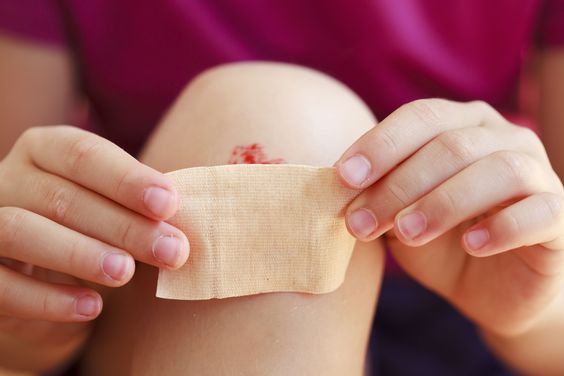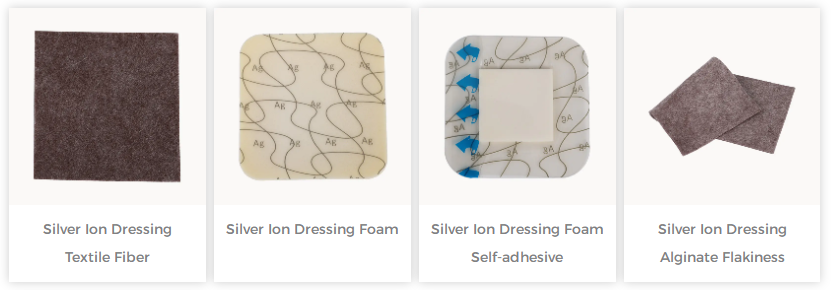Small wounds are unavoidable in daily life, but some people choose to use band-aids to protect the wounds for convenience. If the wound is deep, if the unsterilized wound is covered with band-aids for a long time, the wound will be more likely to breed bacteria, and the wound will fester. Wound suppurative infection, will not only prolong the time of wound healing but also aggravate the condition. Some wounds will leave obvious scars after healing. Here, this article talks about how to care for wound suppuration and infection, so as to facilitate wound healing.
What causes a wound infection?
1. The cause of the wound itself. If the wound is not cleaned and disinfected thoroughly, the wound is not effectively protected, or the wound is accidentally soaked with water, bacteria will enter the wound, and then the infection will occur.
2. Physical reasons. If the immune system is low, or if you have diabetes and fail to effectively control high blood sugar, the wound is prone to infection and difficult to heal.
In what ways can microorganisms enter a wound and cause wound infection?
Direct contact: such as transfer from equipment or nursing staff, unprotected wounds, leading to invasion of foreign microorganisms.
Airborne: Microorganisms deposited from the surrounding air.
Self-contamination: Physical transfer from the patient's skin or gastrointestinal tract.
How to tell if a wound is infected?
1. Observe the color of the wound: You can observe the color changes around the wound. If the wound is red, you should be alert to inflammation; if the wound is yellow, you should be alert to tissue necrosis; After the normal loss of dead tissue, the wound can heal.
2. Observe the characteristics of the wound: Before treating the wound, it is necessary to observe the appearance of the wound and the amount of exudate. If infection occurs, timely and correct treatment is required.
3. Observe whether the wound is infected: if there is heat pain, redness, swelling, etc. at the wound site, and it emits a peculiar smell, it indicates infection. Please perform a bacterial inspection in time.
How should a wound infection be treated?
Mild infection: If the wound has a mild purulent infection, first clean the wound, then disinfect the wound, and then use silver ion dressing. At the same time, the amount of exudate from the wound should be evaluated, and new dressings should be replaced in time to avoid re-infection.
Severe infection: For wounds with severe purulent infection, the wound can be cleaned repeatedly with saline, and then bandaged with silver ion dressing foam to facilitate wound healing.
Deep wound infection: For patients with purulent infection in the deep wound, the stitches should be removed in time, the skin should be cut open, the pus should be drained out with drainage, filled with silver ion dressing alginate flakiness, and the wound should be changed regularly every day until the infection is under control, change the medicine every 1 to 2 days.
Should the pus be drained immediately after the wound suppurates?
wound pus should be discharged or not, the treatment methods will be different according to different situations. First, observe the wound suppuration to determine whether the wound suppuration is serious. If the wound suppuration is mild, you don't need to drain the pus. You can take anti-inflammatory drugs according to the doctor's instructions, then use normal saline to wash the wound repeatedly, and then use silver ion dressing to wrap it up. Can. Once the wound suppuration is found to be serious, or the patient has tissue necrosis due to long-term infection it is necessary to debride the wound first, and then use a suitable functional dressing for treatment.
What to do after the wound suppurates so as not to leave a scar?
As the wound heals, a scar usually remains. Over time, this patch of the skin develops thick scar tissue. Early prevention is particularly important. Silicone scar dressing tubular can be used when the wound is healed without redness, swelling, or bleeding. Silicone Scar Gel has scar-improving properties due to the hydration of the scar, and the hydration provides better collagen tissue during the healing phase. It smoothes, softens, and smoothes scars, relieves itching, and reduces scar-related discoloration.
How to prevent wound suppurative infection?
To prevent wound suppuration and infection, it is necessary to clean, disinfect, and bandage the wound after the wound appears. It is also necessary to disinfect the wound regularly and replace it with a new wound dressing in time.
For more information on Innomed® silver ion dressing, refer to the previous articles. If you have customized needs, you are welcome to contact us; we will serve you wholeheartedly.
At Longterm Medical, we transform this data by innovating and developing products that make life easier for those who need loving care.
Editor: kiki Jia
Date: December 15, 2022

 English
English عربى
عربى Español
Español русский
русский 中文简体
中文简体








